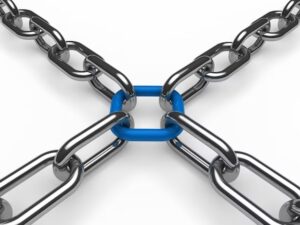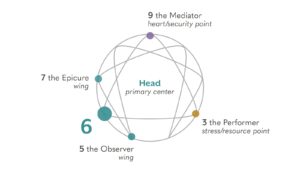A couple of weeks back on this blog I mentioned an exciting “iron in the fire”: and I can now reveal the full form. Early in the new year I will be starting a regular personal and professional development group for counsellors and psychotherapists, “Through the lens of the enneagram“.
It’s not a secret that I have been integrating this into my personal and professional life for some time now (over a decade, and 2 – 3 years respectively)…and, I must confess, it has sneaked into my teaching work too! In fact, it was quite difficult refraining from folding its wisdom into my book as I was on the final trajectory toward publication. I resisted the temptation, in the main because this is another book yearning to come into being. Currently “book 3” in the pipeline, it would be next if my priorities were set by excitement factor alone (this is me keeping my Seven wing in check). Why wait? True to my Enneatype Six, I need time to “brew”. We Sixes have a very potent, doubt fuelled “imposter syndrome”. Out of loyalty and respect to the Enneagram, I want to do this book (and the readers) well. True to type and to the season, I am squirrelling away collating information, gathering my thoughts, and most importantly for me, gaining experience in the alchemical vessel of my client (and teaching shhh) work. My friends and colleagues will probably attest to my (not quite evangelical) efforts!
But WHY the enneagram? Don’t you have enough conceptual strings to your bow Helen?
As I detail in my book, I have always been one to integrate different sources of knowledge: a synthesiser. My love of maps: making sense of systems, how they relate, interweave, provide different perspectives on the same thing. I trained in the Western psychotherapeutic approach of the Humanistic tradition, and I have enthused over how my practice of Buddhism dovetails (and where it doesn’t). I love the aspects of my teaching that allow me to connect ideas together; and then find ways to communicate those attempts and translations to others. This is, perhaps, the Five “wing” of my enneagram type manifesting.
 What I didn’t include in my book, and could easily have done so, was how powerful the Enneagram has served as the link between my Western and Eastern practices. The more I have practiced as a therapist, the more I have moved along the arc from “psychological” to “spiritual”. I don’t think I am alone in experiencing that. Indeed, the therapists I have been interviewing recently for my research project exploring what underpins counselling and psychotherapy in the Humanistic tradition have said something similar. With more experience and client hours, we get more in tune with the recurring motifs – not just an actualisation of self, but an individuation toward Self (as Jung might represent it).
What I didn’t include in my book, and could easily have done so, was how powerful the Enneagram has served as the link between my Western and Eastern practices. The more I have practiced as a therapist, the more I have moved along the arc from “psychological” to “spiritual”. I don’t think I am alone in experiencing that. Indeed, the therapists I have been interviewing recently for my research project exploring what underpins counselling and psychotherapy in the Humanistic tradition have said something similar. With more experience and client hours, we get more in tune with the recurring motifs – not just an actualisation of self, but an individuation toward Self (as Jung might represent it).
Self is an integration-, and transcendent function-of our being toward inter-being.
The Enneagram is thus more than a personality typology because it is a map of inter-being; what the transpersonal and non-dual traditions speak of as “unity appearing as multiplicity”. Each and every one of us IS of the same nature, cut from the same cloth if you like…and yet, we are each unique. With the Nine types – each flavoured by its two wings, the three instincts, movement toward integration and disintegration – it has very little in common with a static personality typing; there is movement and flow depending on our childhood experiences and neurobiology, the present environment and relational field, and needless to say, the extent to which we have worked through our wounding (in therapy or other practice paths).

So, there is a “map”. This helps me understand how I, Helen, as someone with Six process tends to live out her experience. It helps me recognise traits and habitual tendencies that have deep, deep tracks and grooves. In coming to know the Enneagram, I have come to realise just how much I doubt…pretty much constantly…and how my thinking, feeling, behaving is fuelled by that doubt.
And when a Six carries this doubt into her world, others will respond to that doubt in their OWN style of relating. For example, I know that the Enneatype Eights around me “hook” into that doubt and it provokes a reaction in their own style of relating concerning power. In other words, when two Types come together, there is a resonance. It is not formulaic – like I say, the enneagram map is SO fluid: and we have to come to know our own nuances and the multiplicity in our depths of being.
You might remember that some of my writing this summer has been toward generating material for our MSc psychotherapy programme, a new module on “neuroscience and its implications: mind, brain, body”. In one of the sessions I am teaching, I am offering some thoughts as to how we can theorise the “space between” and what exactly IS happening between therapist and client that initiates healing. I am particularly passionate about how the non-dual wisdom teachings can supplement Western psychotherapeutic theory (such as Ogden’s analytic third, Buber’s I-Thou to name but two). And so, when I think of that in the context of “this” – the Enneagram – I am again leaning into my Five wing and considering systems of overlap.
 Is it a coincidence that Bion’s “O” is the same nomenclature as the baseplate of the Enneagram symbol?
Is it a coincidence that Bion’s “O” is the same nomenclature as the baseplate of the Enneagram symbol?
When I sit in a room, opposite a client, without speaking there is already a sense of one another. And yet, it can be hard to find words to fit the particular resonance. What is it about me (them) that hooks into them (me)? What am I (as someone with Six process) attending to in the relational field; and reciprocally, what are they attending to in their own Enneatype style? There is something VERY powerful in the Enneagram system that assists a demystification of the in-between.
Ben, a 56 year old client, was explaining to me a recent relational issue that had arisen with his wife, Christie. As a self-identifying Nine, Ben was struggling to see how he had fallen asleep to himself, forgetting and foregoing his needs and so falling into the merger with Christie. Ben told me how Christie wanted him to “pull himself together” and make up his own mind about a career change decision he had been putting off…and off. To me, his choices were clear, but in his stuckness I had felt the urge to make the decision for him. I had been feeling something of that “stop complaining, get on with it” the in-between of us.
Taking this to supervision and discussing how my Six process was inter-mingling with Ben’s Nine process helped identify how my own need to “get on” was a strategy in my armoury of shoring up my future. Anyone dragging their heals risks me falling into the abyss that lay below the doubt, and this was getting activated through Ben’s sloth-like process.
Pat, a 38 year old woman, had been in my view “playing with fire” in her relationships. On one hand, she was adventurous and daring; and yet she also wanted her girlfriend to be there for her while she figured out whether she wanted to stay in their relationship. She was really testing Sally, and I had been feeling tested too, as if any sign I was not agreeing with her she would leave therapy.
I shared with my supervisor that I sensed Pat might be someone with Eight process, it helped me understand how much more sensitive to loss I am compared to an Enneagram Eight (especially with a subtype of self-preservation, more on that another time). Whilst I deemed Pat’s behaviour was risky, for Pat is was worth playing out given her childhood of abuse. Seeking justice often flavours the Eight’s propensity for being a “bull in a china shop”. My supervisor pointed out I could probably do with taking the brakes off a little – an Eight respects a Six more if they come out and confront (which to a Six can feel like conflict). Sure enough, once I entered the “fire” with Pat we developed a more alliance.
These are short case vignettes, but I hope they convey a taste of how the Enneagram styles tune us into where our client’s attention is focused. Like a chemical reaction, my need for certainty (to offset fear and doubt) reacts with needs for perfection (One), giving (Two), image (Three), specialness (Four), information (Five), skepticism (fellow Sixes), entertainment (Seven), lust (Eight), and / or comfort (Nine)…and the various other flavours of each Type. Like a radio, to tune in we need initial settings for our antennae, the Enneagram can position that dial.
In words more familiar to therapy, the Enneagram can help build empathy and ameliorate misattunement. In recognising a client’s priorities may differ to my own, I know what it’s like to not get a need attended to – as a Six, when I don’t get my need for safety met, I can imagine what a Two feels like when he doesn’t get to fulfil his service to other. A different pain, but a knowing of pain: an empathy bridge. Similarly, knowing a client’s Type process, I can keep this in mind and switch track – seeing where a client’s attention is driving in any given situation rather than overlaying my own: avoiding misattunement.
 I would also suggest knowledge of the Enneagram illuminates our shadow-side and where we might fall prey to certain transferential invitations. I know I am easily hoodwinked into collusion by the humour of a Seven and captivated by the existential dance close to the abyss with a Five (my two wings). I might also find myself squirming at the image conscious Three (my disintegration point as a Six), and triggered by the One who needs me to be perfect (One’s bring this out in me, I think its the Sixes existential need to not get things wrong).
I would also suggest knowledge of the Enneagram illuminates our shadow-side and where we might fall prey to certain transferential invitations. I know I am easily hoodwinked into collusion by the humour of a Seven and captivated by the existential dance close to the abyss with a Five (my two wings). I might also find myself squirming at the image conscious Three (my disintegration point as a Six), and triggered by the One who needs me to be perfect (One’s bring this out in me, I think its the Sixes existential need to not get things wrong).
There is, however, great worth in following Enneagram teachers’ advice to first off get familiar with the basic bandwidth of our antennae. We all have three intelligence centres: mind, heart, gut (equating to thinking, feeling, intuiting). This week, I was discussing this with trainees as they encounter their first taste of experiential working. In the workshop, we were exploring embodied listening: while listening to someone’s story of “how I came to be me”, I invited them to not follow the words but instead, access where the story landed, to pinpoint their source of knowing. Sure enough across the group there were various styles of feedback.
- Some felt more able to make sense of the story with links and ideas; some were using imagery and metaphor
- Others felt more comfortable with emotional resonance and the feeling tone
- A few felt the physical sensations and response in the body.
We are all different: and whilst we have all three intelligence centres, one is more online than the others. We just need to know our superpower, and therefore our blindspot(s).
When discussing some of this terrain with a peer, she added how powerful this kind of awareness can be in honouring the therapist we are rather than the therapist we think we “should be”: the shame that can come up when we think we have done something wrong, how we missed the “right way” (as if there was only one intervention in that moment). The Enneagram helps us tune into our truest capacities, our best instruments. I have a few supervisees who are now adopting the Enneagram in their clinical work, and exploring the relative merits of our Types is a useful way of seeing more points of view: as if we skip over to the other side of the circle and view the same event and moment from another angle. There is more than one way to prepare an avocado!!
In the Humanistic tradition, we speak a lot about the importance of this ‘subjective perception’,: two people can only ever experience the same event differently, and we can never know the experience of another. For me, the Enneagram helps towards bridging that subjectivity gap. I will never know my client’s world, but I can get a little closer by seeing their own superpower on the map, re-centre my geolocation, and attempt navigation from their position – or at least look over similar terrain. The skill, as with any map, is to hold that tension between knowing enough and not knowing at all.
The Enneagram will always be a map, but so far in my experience it is a pretty good one. I hope by undertaking this period of deep immersion into its teachings it will allow the addition of more data points, ever improving that working model.

